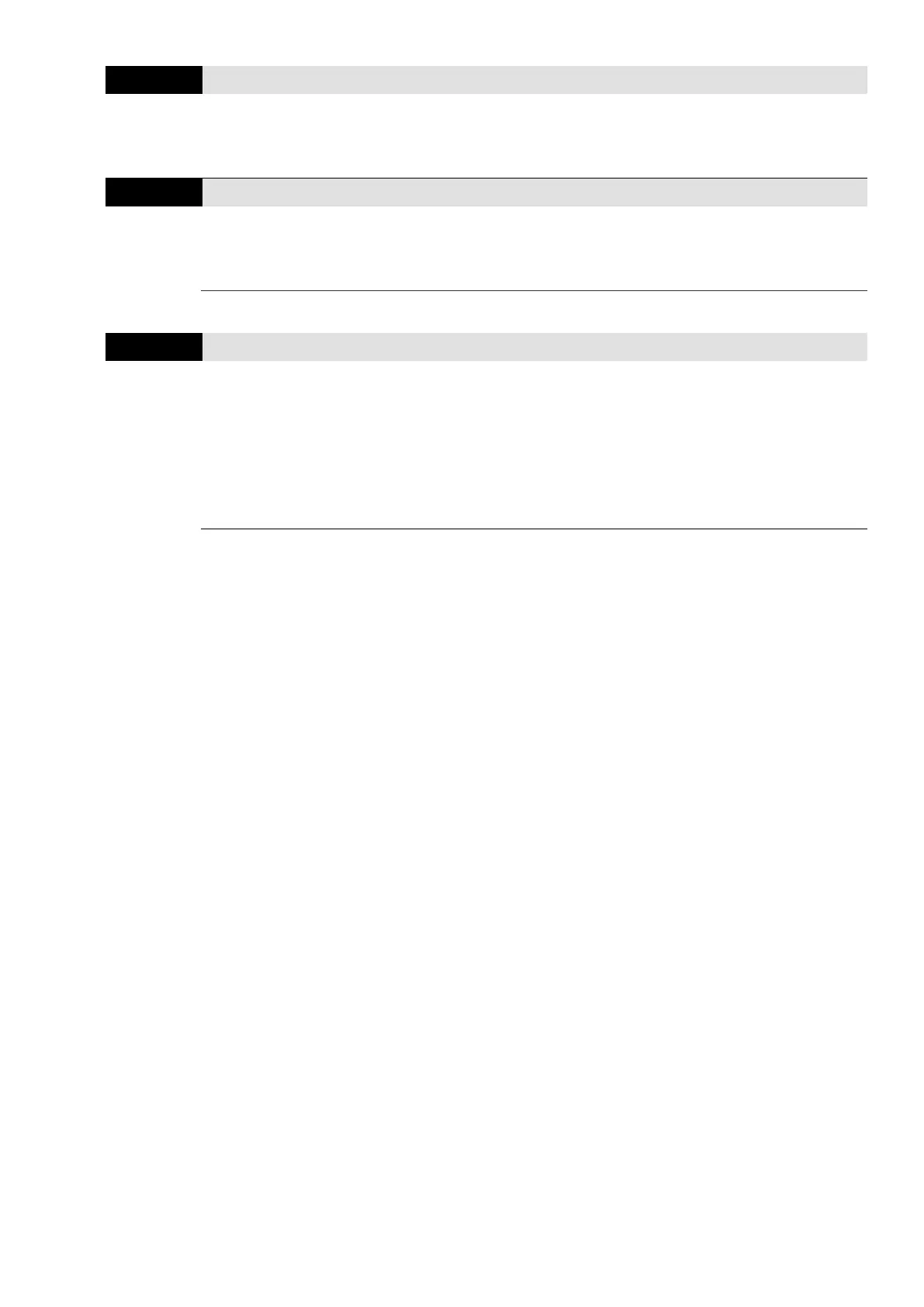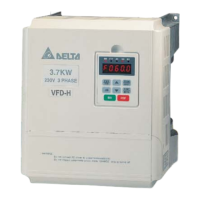Allowable maximum output frequency and the minimum carrier frequency limit in control mode:
For VF, SVC, VFPG modes: Maximum operation frequency (Pr.01-00) × 10 minimum sampling
minimum point limit
Setting 0:
Actual over-current stall prevention level = derating ratio × over-current stall prevention
level (Pr.06-03 and 06-04).
Rated current derating level: derating ratio × rated current (Pr.00-01).
When the operating point is greater than the derating curve, the carrier frequency (Fc)
output by the drive decreases automatically according to the ambient temperature, overload
output current and overload time.
Application conditions: If overloads are not frequent, and the concern is only about the
carrier frequency operating with the rated current for a long time, and changes to the carrier
frequency due to short overload are acceptable, set to 0.
Take VFD9A0MS43ANSAA normal load for example: ambient temperature 50°C, UL Open
Type, and independent installation. When the carrier frequency is set to 10 kHz, it
corresponds to 55% of the rated output current. In the same condition for ambient
temperature 40°C, it corresponds to 75% of rated output current. When the output current is
higher than this value, it automatically decreases the carrier frequency according to the
ambient temperature, output current and overload time. At this time, the overload capacity
of the drive is 150% of the rated current.
Setting 1:
Actual over-current stall prevention level = derating ratio × over-current stall prevention
level (Pr.06-03 and 06-04).
When the operating point is greater than the derating curve, the carrier frequency (Fc)
output by the drive is fixed to the default value.

